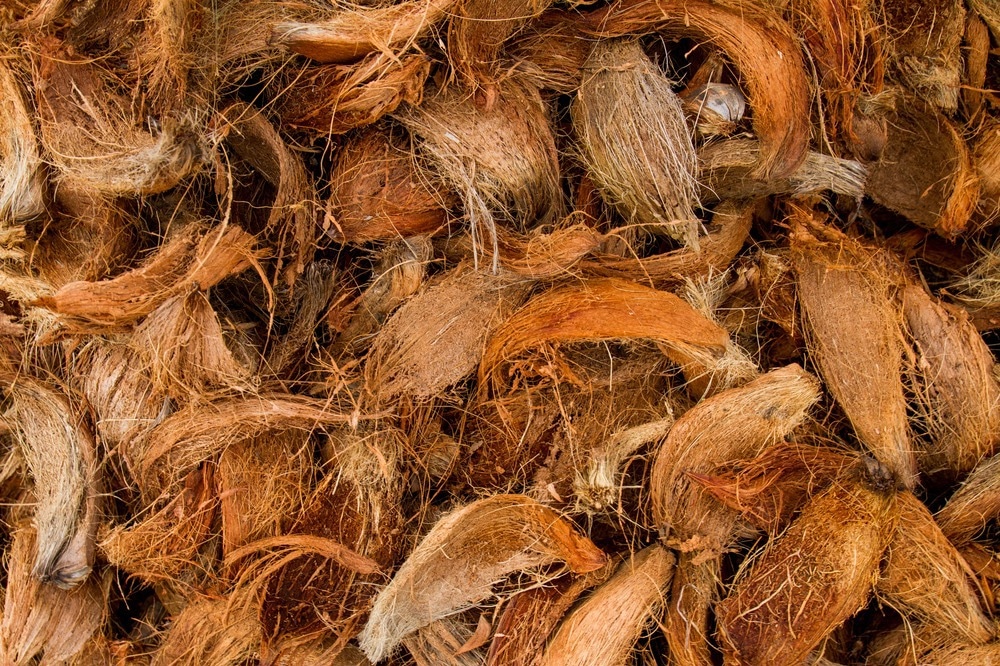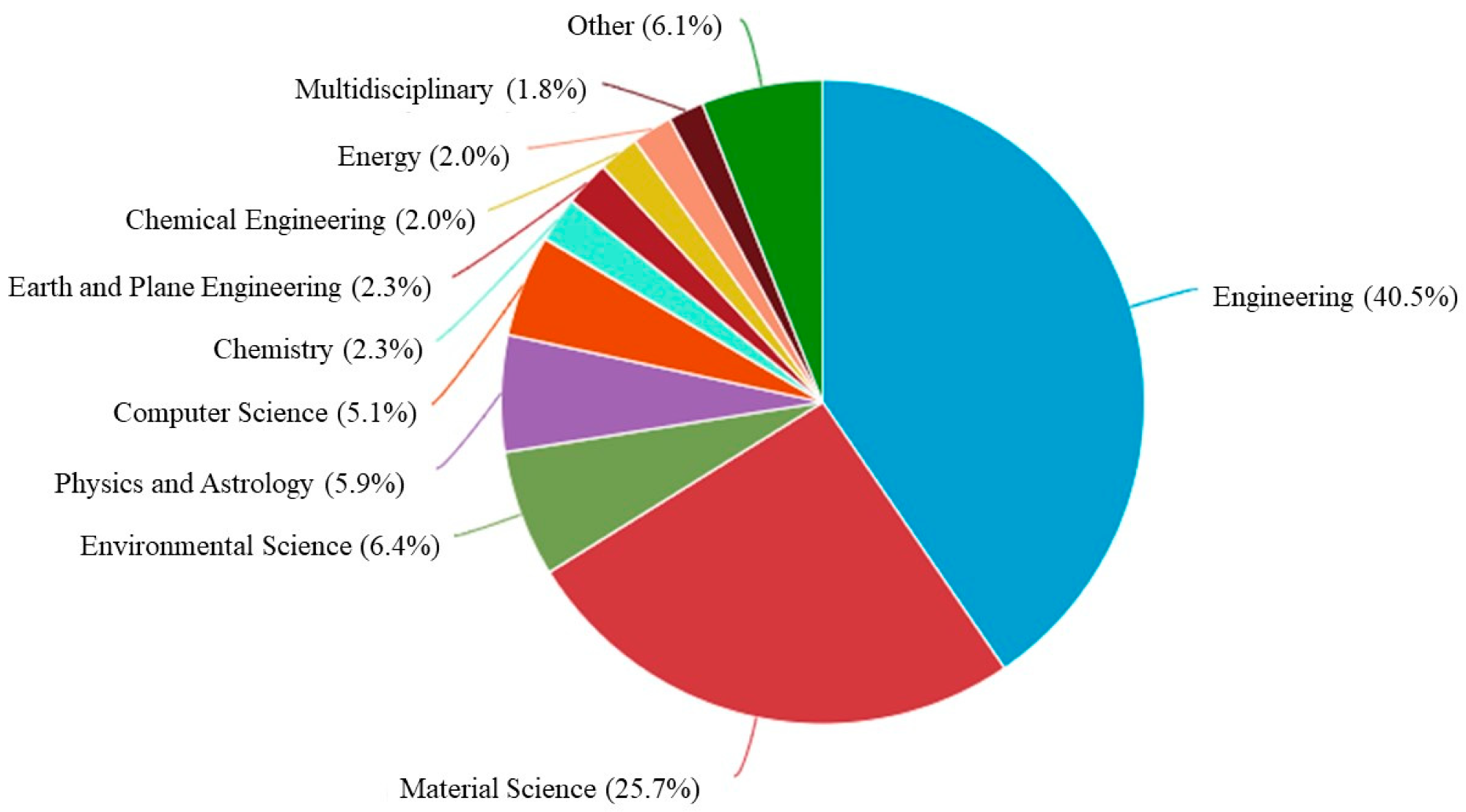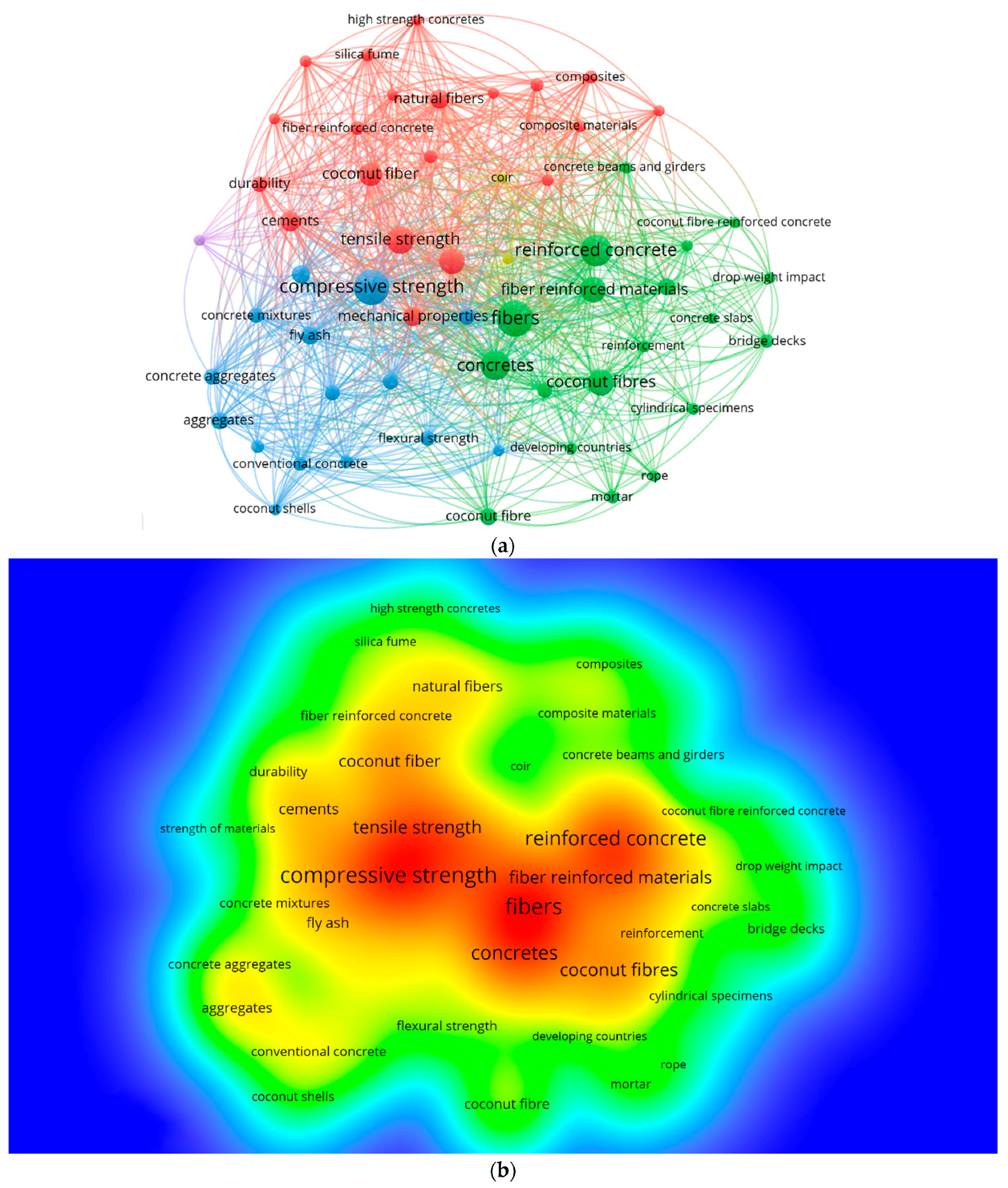In a paper recently published in the open-access journal Materials, researchers carried out a scientometric review of the applications of coconut fibers in cementitious concrete to explore several aspects of the corresponding literature. The team recovered 235 published studies and their bibliometric data from the Scorpus dataset and analyzed them using the VOSviewer application.

Study: Scientometric Analysis and Research Mapping Knowledge of Coconut Fibers in Concrete. Image Credit: Fiwsamatcha/Shutterstock.com
Background
Natural fibers such as hemp, coir, ramie, and jute have mechanical properties such as density, elongation at break, strain, and failure similar to those of some synthetic fibers. Cementitious concrete can be strong against compressive loads but weaken when tensile forces are applied. The tensile strength of the concrete can be enhanced through the incorporation of different types of fibers.
Coconut fibers (coir) are one of the natural fibers used in the development of high-strength and long-lasting products. Coir is primarily categorized into four types such as bristle coil, buffering coil, brown fibers, and white fibers. Bristle coil has little to no pulp content and is usually more than five inches in length. The most widely used coconut fiber is the brown fiber that is generally highly thick, abrasive, and strong. The bulk presence of lignin in coconut fiber and lesser cellulose content makes it strong, solid, and versatile.
However, the research and knowledge on the viability of coconut-fiber-reinforced concrete are scattered. The present research aimed to provide a review of literature on the incorporation of coir in cement composites while focusing on their mechanical properties and application as well as the current status in the industry. The scientometric analysis covered research up to the year 2022. Furthermore, a suitable software tool for the scientometric analysis was used to aid in the quantitative assessment of the research database.
![Coconut longitudinal section (adapted from [37]).](https://d12oja0ew7x0i8.cloudfront.net/images/news/ImageForNews_59809_1661159116779937.png)
Coconut longitudinal section. Image Credit: Gu, M. et al., Materials
About the Study
In this study, the team utilized two search engines, namely Web of Science and Scopus. Using Scopus and searching “coconut fiber reinforced concrete” provided records for the period from 2010 to 2022. Unnecessary data was evaded using preferential filters for the document and source types. The search results were further refined by selecting engineering, environmental science, and material science as the subject areas. A total of 235 results were taken.
Furthermore, VOSviewer was used to perform quantitative determination of the recovered literature and the scientific visualization. An additional evaluation was performed by loading the Scopus records saved as comma-separated values (CSV) files in VOSviewer for the consistency and integrity of the data. Evaluations were also carried out for the participating countries, the most cited researchers with significant publications, frequent keywords, publication sources, and bibliographic data.

The subject area of articles. Image Credit: Gu, M. et al., Materials
Observations
The Scopus analyzer’s search results showed three sections that comprised 73% of the document count, including environmental science, material science, and engineering, with contributions of 41%, 26%, and 7%, respectively. On the basis of citations, the three main sources were “Materials Today: Proceedings”, “Materials”, and “Construction and Building Materials”, having 56, 122, and 876 citations, respectively.
Moreover, the co-citation patterns for the published articles were used for grouping in VOSviewer. The results also pointed out that the research for coconut-fiber-reinforced concrete mostly used six keywords, namely, coconut fibers, tensile strength, reinforced concrete, compressive strength, concretes, and fibers. These studies mainly explored mechanical properties like tensile and compressive strengths.
Assessment of the cited researchers revealed that some authors were interconnected in citations for research involving coconut-fiber-reinforced concrete with a maximum of 10 interconnected researchers’ networks. Furthermore, the top three countries with the most amount of research were India, Malaysia, and New Zealand, comprising 41, 28, and 20 studies, respectively. In terms of citations, the leading countries were Pakistan, Malaysia, and New Zealand, with 367, 473, and 603 citations, respectively.

Keywords analysis: (a) Scientific visualization. (b) Density visualization. Image Credit: Gu, M. et al., Materials
Conclusions
To summarize, the team conducted a scientometric analysis of 235 articles using the Scopus database while the results were evaluated using VOSviewer. The analysis of the results showed that the use of coconut-fiber-reinforced concrete could bring sustainable development to the construction industry through reduced CO2 emissions and decreased requirements for aggregates and cement. Although the incorporation of coconut fibers in the concrete can decrease its brittleness, in addition to enhancement of other mechanical properties, their applications are still being developed. Moreover, there is limited knowledge on the longevity of coconut fibers.
According to the authors, the graphical and statistical assessment of the participating countries may aid the researchers in developing scientific alliances and collaborations in the field of coconut-fiber-reinforced concrete, bringing forth the exchange of novel ideas and methods. Additional studies on the long-term durability of the coconut fibers in concrete will be crucial in extending their applications in structural members.
Disclaimer: The views expressed here are those of the author expressed in their private capacity and do not necessarily represent the views of AZoM.com Limited T/A AZoNetwork the owner and operator of this website. This disclaimer forms part of the Terms and conditions of use of this website.
Source:
Gu, M. et al., Scientometric Analysis and Research Mapping Knowledge of Coconut Fibers in Concrete. Materials 2022, 15, 5639. https://doi.org/10.3390/ma15165639